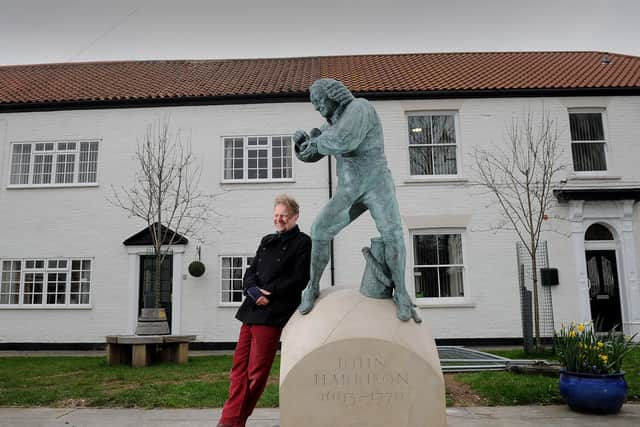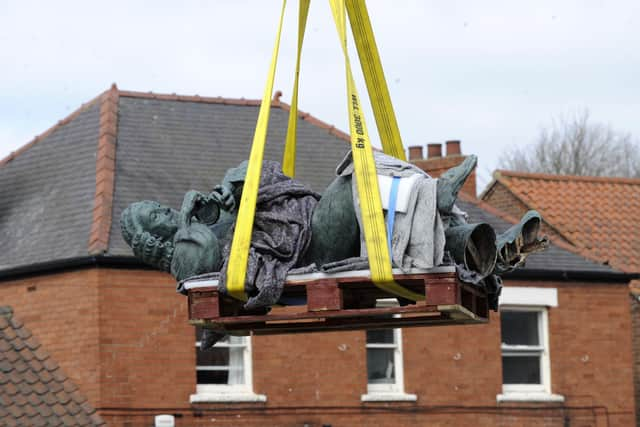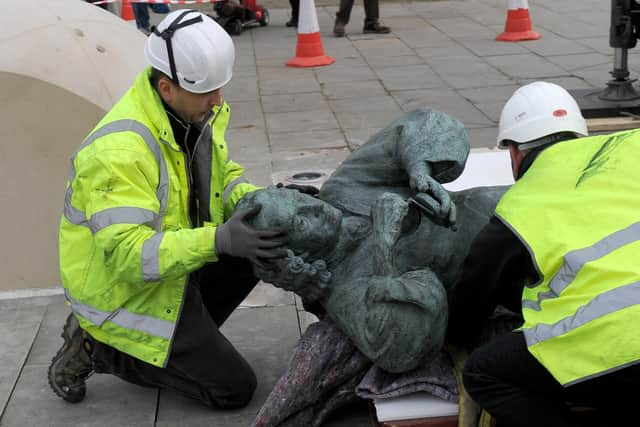Barrow-upon-Humber’s timely tribute to a local hero who beat the clock
Barrow-upon-Humber retains only a few traces of John Harrison, even though he spent most of his life there. A school bears his name but his old workshop, next to the Royal Oak, is now someone’s house.
The crane they wheeled in this week signalled that the time had come to give him his due.
Advertisement
Hide AdAdvertisement
Hide Ad“At last – John Harrison has come home,” said Ann Boulton, vice-chair of the Better Barrow community project, as she watched a bronze statue of him being hauled into place in the Market Square – just across the road from the pub, and looking out towards the water.


It is a fitting pose, for the ships that still ply the Humber remain beholden to Harrison for their bearings.
A carpenter and self-taught clockmaker who moved to Barrow in around 1698, aged five, he revolutionised navigation by inventing a portable clock that could calculate longitude at sea. He also designed precision long-case clocks that were the most accurate in the world, keeping time to within a second a month.
A statue of him in the village had long been an ambition, Mrs Boulton said. Contributions towards the £70,000 cost had come from horology institutes in Britain, the US and Canada, as well as from local residents.
Advertisement
Hide AdAdvertisement
Hide Ad“One of our aims was to make the Market Place better and more usable, and the other was to promote Harrison’s heritage within the village and to a wider audience,” Mrs Boulton said.


Although his brother’s house survives, Harrison’s own home was demolished long ago. The bungalow that stands there now has a plaque on the wall.
And while the local children know of their famous forebear from the name above the door, other signs of his presence are few. “There’s a John Harrision Close but beyond that there isn’t a lot actually,” Mrs Boulton said.
Barrow’s parish council ran a competition to find a suitable design for the statue. The winner was Marcus Cornish, whose best-known work is the life-size statue of Paddington Bear that stands in the London terminus after which he was named.
Advertisement
Hide AdAdvertisement
Hide AdHe hoped that the finished bronze of Harrison would be a centrepiece for Barrow, and bring focus and symmetry to the market square, he said.


“It’s not a massive piece of sculpture, although it felt like it when it was being made. But it’s very accessible and human.”
He had wanted to incorporate the twin themes of navigation and timekeeping into the figure, whose subject is depicted in an elaborate Georgian wig with work clothes beneath, holding his sailors’ watch in one hand and winding it with the other.
“He’s just about managing to balance on the shape of the globe,” Mr Cornish said. “And that’s what his job was – to stop people from slipping away under the waves.”
Advertisement
Hide AdAdvertisement
Hide AdThe first of Harrison’s four sea clocks were engineered at his workshop in Barrow, in response to an Act of parliament which promised a reward to anyone who could solve the problem of finding a ship’s precise longitude at sea.
His statue, presently under cover, will be officially unveiled at a civic ceremony at precisely midday on March 24 – which according to most records was the date of both his birth and death.
Comment Guidelines
National World encourages reader discussion on our stories. User feedback, insights and back-and-forth exchanges add a rich layer of context to reporting. Please review our Community Guidelines before commenting.